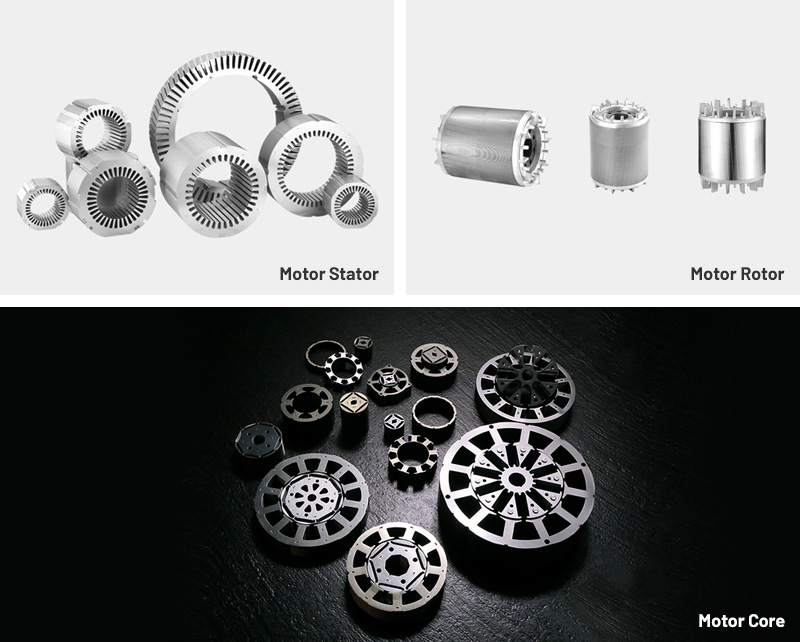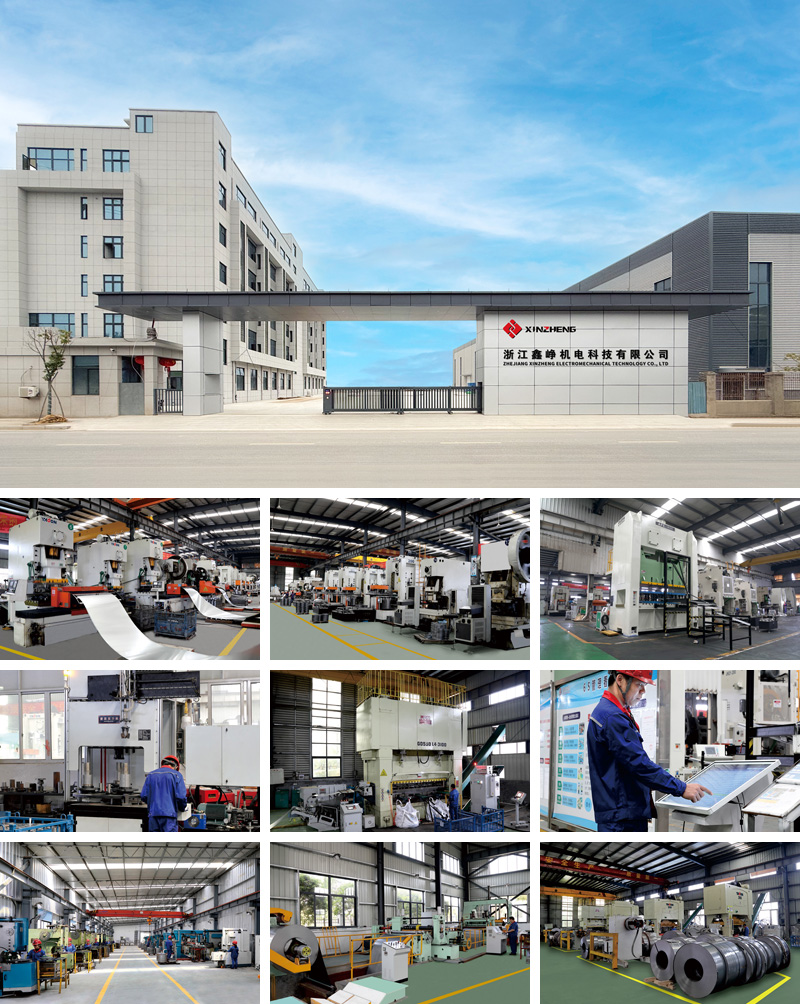Electric motors are central to modern industrial systems, transportation, renewable energy, and automation applications. In many of these environments, exposure to moisture, chemicals, and extreme temperatures can accelerate corrosion, reducing motor efficiency, lifespan, and reliability. Corrosion-resistant surface-treated motor laminations have become essential for mitigating these challenges.
Global industrial trends, such as the expansion of electric vehicles, high-humidity manufacturing facilities, and coastal energy installations, have increased the demand for motor laminations that maintain stable performance over long operational periods. Manufacturers require laminations that not only provide electromagnetic efficiency but also resist rust and oxidation, minimizing maintenance costs and downtime. This demand has led to a growing market for laminations featuring advanced surface treatments that enhance corrosion resistance without compromising magnetic properties.
Motor laminations function as the core of electric motors, forming stator and rotor assemblies that guide magnetic flux and reduce energy losses. The two primary types of electromagnetic losses in laminated cores are:
Hysteresis Loss: Energy consumed during repeated magnetization and demagnetization cycles.
Eddy Current Loss: Currents induced in conductive materials by changing magnetic fields.
Corrosion-resistant surface-treated laminations introduce an additional layer of protection to address environmental degradation while maintaining these core functionalities. Surface treatments, such as passivation, phosphate coatings, or epoxy-based insulating layers, create a barrier against moisture, chemical attack, and oxidation. By combining corrosion resistance with optimized electrical steel, these laminations ensure reliable magnetic performance and reduce long-term energy losses.
Key technical parameters include:
Material Composition: High-grade electrical steel with controlled silicon content ensures low hysteresis and eddy current losses.
Surface Treatment Integrity: Uniform coating thickness and adhesion prevent corrosion while maintaining mechanical and magnetic properties.
Dimensional Precision: Consistent lamination thickness and slot geometry support stable performance and minimize vibration.
Corrosion-resistant motor laminations are typically made from cold-rolled electrical steel. Key features include:
Magnetic Permeability: Ensures efficient magnetic flux conduction and low hysteresis losses.
High Electrical Resistivity: Reduces eddy current losses.
Mechanical Strength: Supports stacking, centrifugal forces, and vibration without deformation.
The surface treatment adds a protective barrier against oxidation, corrosion, and environmental degradation. Coatings are carefully selected to resist high temperatures and chemical exposure, preserving both insulation and mechanical integrity.
Die and Tool Design: Precision dies are engineered for stamping complex lamination geometries, including slots and holes, while maintaining tight tolerances.
Stamping: Progressive stamping presses form laminations from steel strips, producing smooth edges and uniform thickness.
Annealing: Post-stamping heat treatment relieves mechanical stress and optimizes magnetic properties.
Surface Treatment: Lamination surfaces are treated with corrosion-resistant coatings, such as phosphate conversion layers, epoxy-based coatings, or passivation.
Stacking and Assembly: Laminations are stacked to form stator or rotor cores. Bonding, welding, or mechanical interlocking ensures structural integrity during high-speed operation.
Through this process, laminations achieve both electromagnetic efficiency and environmental resilience, making them suitable for long-term operation in demanding conditions.
Several variables significantly impact the performance and longevity of corrosion-resistant laminations:
Material Purity: Impurities or inconsistent alloy composition can reduce magnetic efficiency and mechanical strength.
Surface Treatment Quality: Uneven coating, poor adhesion, or insufficient thickness compromises corrosion resistance.
Dimensional Accuracy: Variations in lamination thickness or slot geometry can increase vibration, reduce efficiency, and impact motor lifespan.
Stacking Precision: Misalignment introduces imbalance, noise, and potential mechanical fatigue.
Thermal Stability: Laminations must maintain coating integrity and magnetic properties under varying temperatures.
Attention to these factors ensures long-term performance and reliable motor operation, even in harsh environments.
Selecting a reliable supplier for corrosion-resistant laminations is crucial for B2B manufacturers:
Material Certification: Documentation specifying steel grade, magnetic properties, resistivity, and mechanical strength is essential.
Manufacturing Capability: Suppliers must demonstrate experience with precision stamping, surface treatments, and high-quality electrical steels.
Quality Assurance: Rigorous inspection protocols, including dimensional checks, coating uniformity, and core-loss testing, ensure consistent product performance.
Post-Processing Options: Some suppliers offer annealing, surface coating, or partial assembly services, reducing production complexity.
Supply Reliability: Consistent lead times, stable material sourcing, and responsive logistics support uninterrupted production.
Working with experienced and certified suppliers ensures both product quality and operational continuity.
Despite technological advances, manufacturers face several challenges when using corrosion-resistant laminations:
High Tooling Costs: Precision dies for coated laminations are costly, especially for low-volume or customized designs.
Material Waste: Complex geometries generate scrap during stamping.
Coating Defects: Incomplete coverage or poor adhesion can compromise corrosion resistance.
Thermal and Mechanical Stress: Continuous operation or high-speed rotation can degrade coatings and cause mechanical fatigue.
Dimensional Variability: Maintaining uniform lamination thickness and slot geometry across large production batches is challenging.
Addressing these pain points requires robust engineering, strict quality control, and close supplier collaboration.
Corrosion-resistant surface-treated laminations are vital across multiple industries:
Industrial Motors: Motors operating in humid, chemical, or outdoor environments require corrosion protection to maintain efficiency and reduce maintenance.
Electric Vehicles: Traction and auxiliary motors benefit from laminations that resist moisture, salt exposure, and chemical degradation.
Renewable Energy Systems: Generators in wind turbines or hydroelectric plants need laminations that maintain performance under continuous operation and harsh weather conditions.
Marine Applications: Motors in ships, offshore platforms, and coastal facilities require corrosion-resistant laminations to prevent premature failure.
HVAC Systems: Fans, blowers, and pumps in high-humidity environments rely on stable laminations to ensure long-term operation.
By providing both corrosion resistance and magnetic efficiency, these laminations support reliable, high-performance motors in demanding environments.
The motor lamination industry is evolving to address environmental challenges and efficiency demands:
Advanced Coating Technologies: New epoxy, ceramic, and polymer coatings offer enhanced corrosion resistance and thermal stability.
Thinner Laminations: Reduced thickness decreases eddy current losses while enabling compact, high-efficiency motor designs.
Automation and Robotics: Automated stamping, coating, and stacking improve precision, throughput, and consistency.
Hybrid Manufacturing Techniques: Laser cutting and etching supplement stamping for complex or low-volume laminations.
Sustainability Initiatives: Energy-efficient laminations contribute to reduced operational losses, lower heat generation, and improved environmental compliance.
These trends indicate that corrosion-resistant surface-treated laminations will play a critical role in the next generation of reliable, high-efficiency electric motors.
Q: How do corrosion-resistant laminations differ from standard laminations?
A: They feature specialized surface treatments that prevent rust, oxidation, and chemical degradation while maintaining magnetic and mechanical performance.
Q: What materials are used for these laminations?
A: High-grade cold-rolled electrical steel with controlled silicon content, coated with protective layers such as epoxy, phosphate, or passivation treatments.
Q: Can they be used in electric vehicles?
A: Yes, they provide corrosion protection for traction and auxiliary motors, ensuring long-term efficiency and durability.
Q: What challenges are associated with corrosion-resistant laminations?
A: Key challenges include coating consistency, maintaining dimensional accuracy, and ensuring mechanical stability under continuous or high-speed operation.
Corrosion-resistant surface-treated motor laminations are essential for electric motors operating in harsh or demanding environments. Through high-quality materials, precision manufacturing, and advanced surface treatments, these laminations provide both electromagnetic efficiency and long-term corrosion protection.
Industries ranging from electric vehicles to renewable energy, marine applications, and industrial automation rely on these laminations to maintain consistent performance, reduce maintenance costs, and extend motor lifespan. As technology evolves, innovations in coating materials, lamination thickness, and automated manufacturing processes will further enhance the reliability and efficiency of these critical components.
By investing in precision engineering, rigorous quality control, and reliable supplier partnerships, manufacturers can ensure that corrosion-resistant motor laminations meet the growing global demand for durable, high-performance motors.
Product Category

Comprehensive Strength


Copyright © Zhejiang Xinzheng Electromechanical Technology Co., Ltd. All Rights Reserved.
This website uses cookies to ensure you get the best experience on our website.